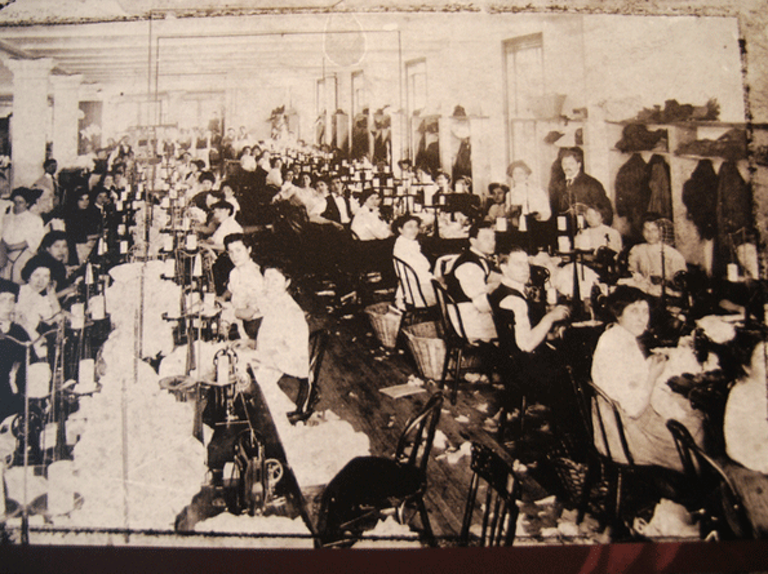Commemorating the Triangle Shirtwaist Fire of 1911
On March 25th, 1911, the 8th, 9th and 10th floors of the Asch Building in New York City’s Greenwich Village were ensconced in ravaging flames that led to the deaths of 146 garment workers and employees.
Deplorable working conditions in the building led to the widespread deaths—the building only had one fire escape, which collapsed early on during the fire. Employees could not escape, as the doors to their work stations were kept locked by their supervisors in order to prevent theft. Poorly designed workspaces with bulky and dangerous machines, long tables and crammed occupancies made escaping the flames virtually impossible.
Firefighters attempted to extinguish the flames with jets of water, which were hindered by the bodies of workers jumping to escape the flames.
Then, when the fire department finally showed up, their ladders were too short to reach the floors impacted by the blaze. As the fire continued to burn, workers began to jump out the windows in groups, choosing to plummet to their deaths rather than burn on the inside of the building. Fatalities rose while all of the United States looked on in horror. The newly minted industrial superpower had to grapple with the abhorrent side effects that accompanied the tidal wave of capitalism.
The Triangle Shirtwaist fire and ensuing labor strikes and lawsuits signaled a strong transition in the American labor industry to a country more thoughtful about workplace safety, standards and fairness. Today, we rely on regulatory bodies such as the Occupational Safety and Health Administration (OSHA), the U.S. Department of Labor, the Office of Labor-Management Standards and others. Workers in the US garment industry are protected through laws such as the Fair Labor Standards Act, and our nation has made significant strides towards eradicating the inhumane working conditions that led to the tragedy that was the Triangle Shirtwaist fire.
Almost all the garment workers at the Triangle Shirtwaist Factory were immigrant teens who didn’t speak English. They worked 12 hours a day with no days off in cramped quarters.
However, over a century later, the garment industry is still riddled with corruption and intentional circumnavigation of the very regulations meant to protect and respect our garment workers.
In the name of high profit margins, instant consumer gratification and fast fashion, many garment manufacturers have found their way around these laws and seek to exploit cheap labor to drive demand in the fast fashion industry. Some aspects of the 2020 garment labor scene are reminiscent of those subhuman conditions in 1911: 10-12 hour workdays, exploitation of immigrant labor to drive down wage costs and wage theft as a result of subminimum wages.
Fast fashion brands such as H&M and Zara also take advantage of developing countries’ lax labor standards in order to drive down costs and outsource labor while taking advantage of the communities that most desperately need stronger human rights resources. According to the Global Slavery Index 2018 report, $127.7 billion worth of garments is imported annually by G20 countries that account for 80% of world trade, resulting in 40.3 million people being trapped in human trafficking. The Dunken Law Firm reports that major fashion corporations will employ tactics such as recruiting with “false promises of a good job, only to find themselves trapped in a factory and employed at inhumanly low wages or under the promise of payment that they will likely never receive… these workers are forced to work long hours and in terrible conditions, risking their health and wellbeing.”
The protests following the fire led to significant changes in workplace and fire safety regulations.
Ultimately, we are thankful for the tireless advocates, regulatory bodies and compassionate policymakers that have fought tooth and nail over the last century to protect some of the world’s most vulnerable employees. However, on the anniversary of this deadly workplace tragedy, we are called to a grim reflection: the clothes we wear and the brands we support lead to the trafficking of human beings.
The bottom line is this: No matter how you swing it, unchecked capitalism will always lead to the exploitation of human beings.
So long as the market demands insanely cheap labor, unethical corporations will be ready to supply it. When workers are not fiercely protected, human rights are violated, children are exploited and lives are lost. It’s time to roll up our (ethically sourced) shirtsleeves and get to work—until we can curb the fast fashion industry and implement massive protections for garment workers, we will have failed to address the very issue that caused our sisters to perish in 1911.
About the Author
Millie Vieira is pursuing a degree in International Politics and Dispute Resolution from the sleepy surf town of Malibu, California. Whether she’s practicing foreign languages (she is currently working to master Spanish, French, and Portuguese), keeping up with international politics, or devouring novels by foreign authors, she is always searching for ways to broaden her horizons. During her free time, you can find Millie exploring California’s national and state parks, going to concerts in Los Angeles, and studying for the LSAT.




